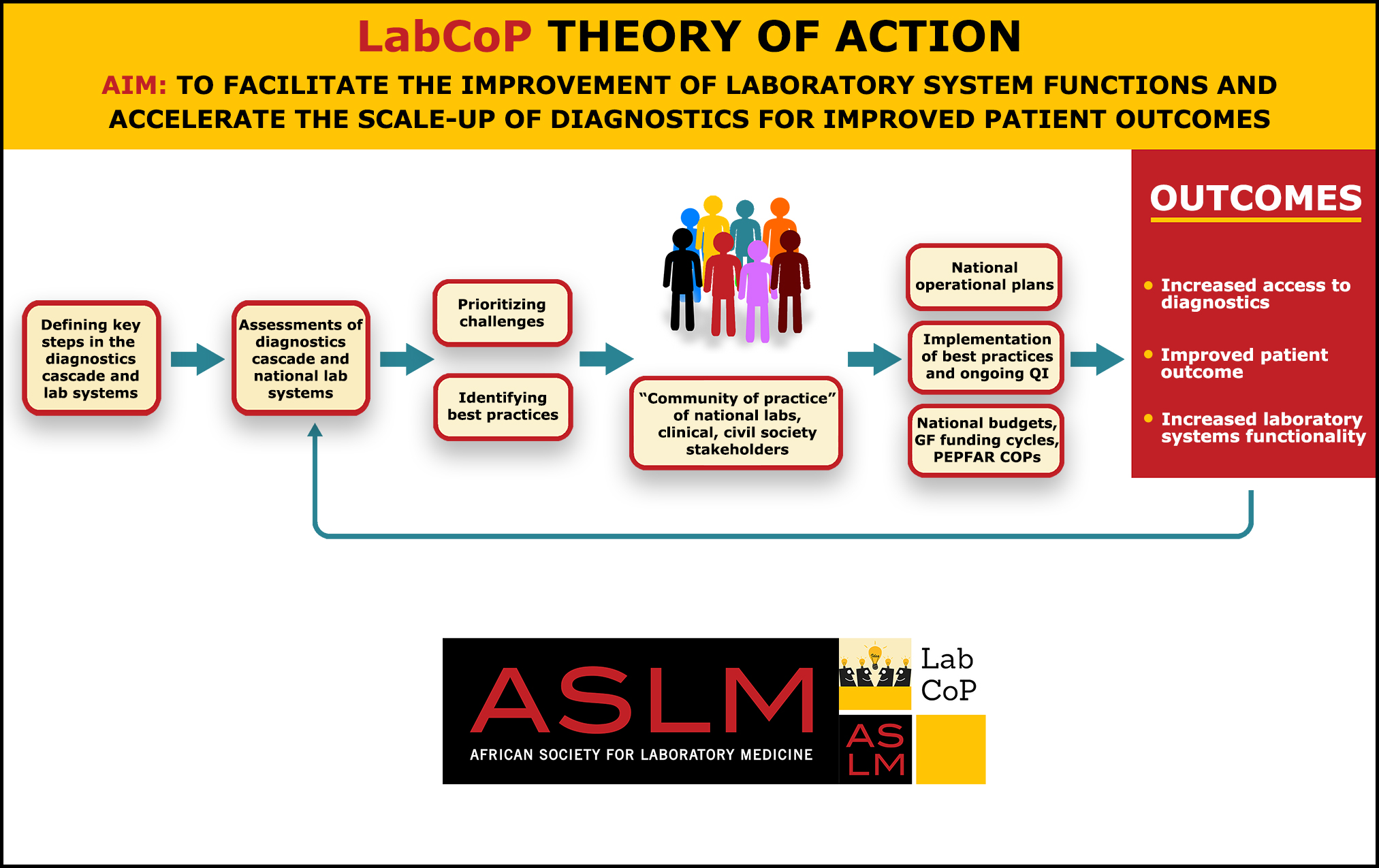Resource Centre
LabCoP Viral Load Cascade and Theory of Action
August 27, 2019

Scaling up viral load (VL) testing to reach the third 95 of the UNAIDS 95-95-95 targets by 2030 requires a holistic approach, addressing each step of the VL testing continuum from the demand for the test for all eligible patients to the utilization of test results. Bottlenecks and inefficiencies along the VL testing cascade as an example, apply to other disease testing and are related to gaps in the underlying laboratory systems, such as sample transportation systems and workforce or supply chain management. Improving diagnostic scale up at the facility level is important; however, systemic issues limiting the impact of testing also need to be addressed at the national level, through the involvement of stakeholders from different sectors, ministries and disciplines.
The diagram linked below depicts the VL testing continuum as an example, how it contributes to better patient management, how it relates to the underlying laboratory systems and how it involves national stakeholders. Embracing this intricate context, LabCoP aims to help improve laboratory system functions and accelerate the scale up of VL and other testing for improved patient management, according to the theory of action below.

